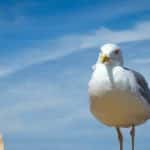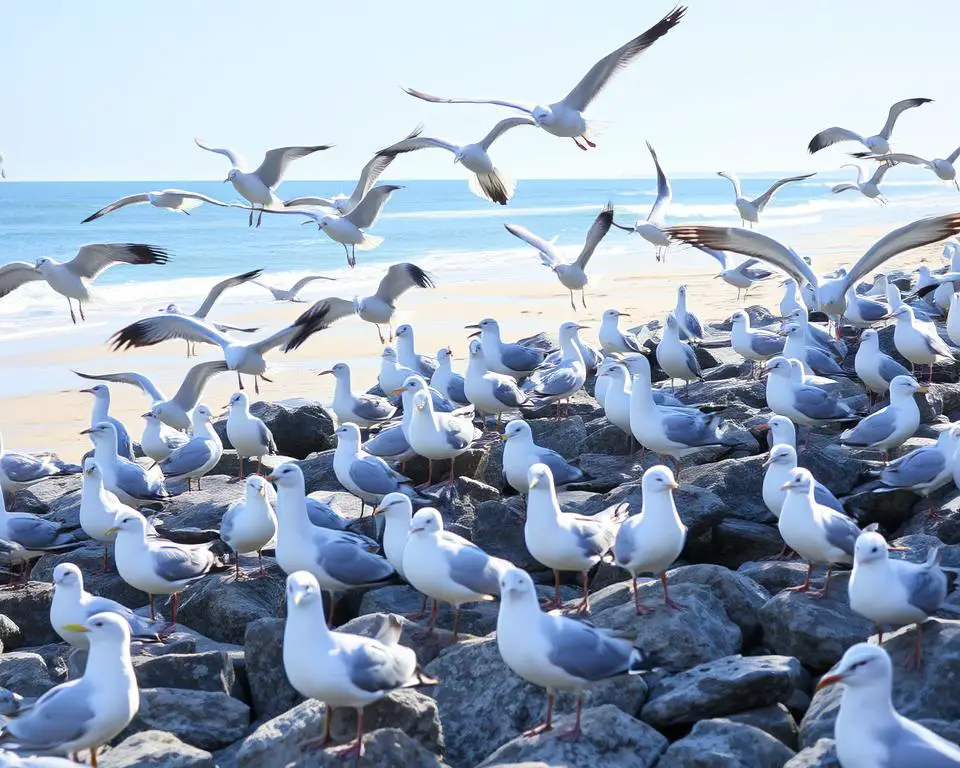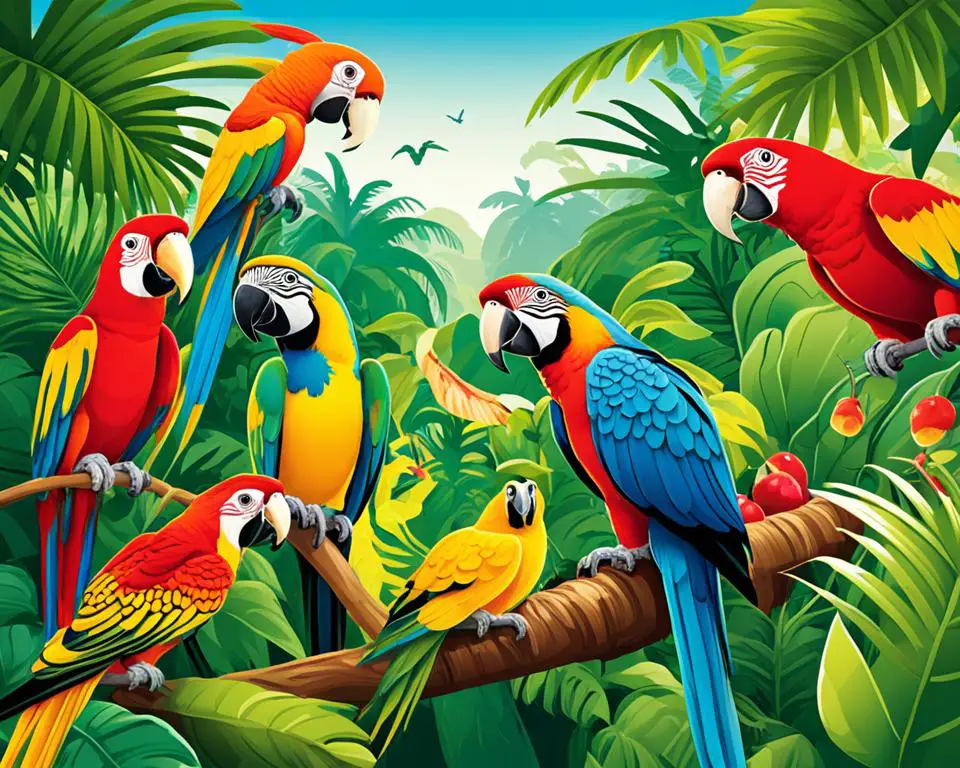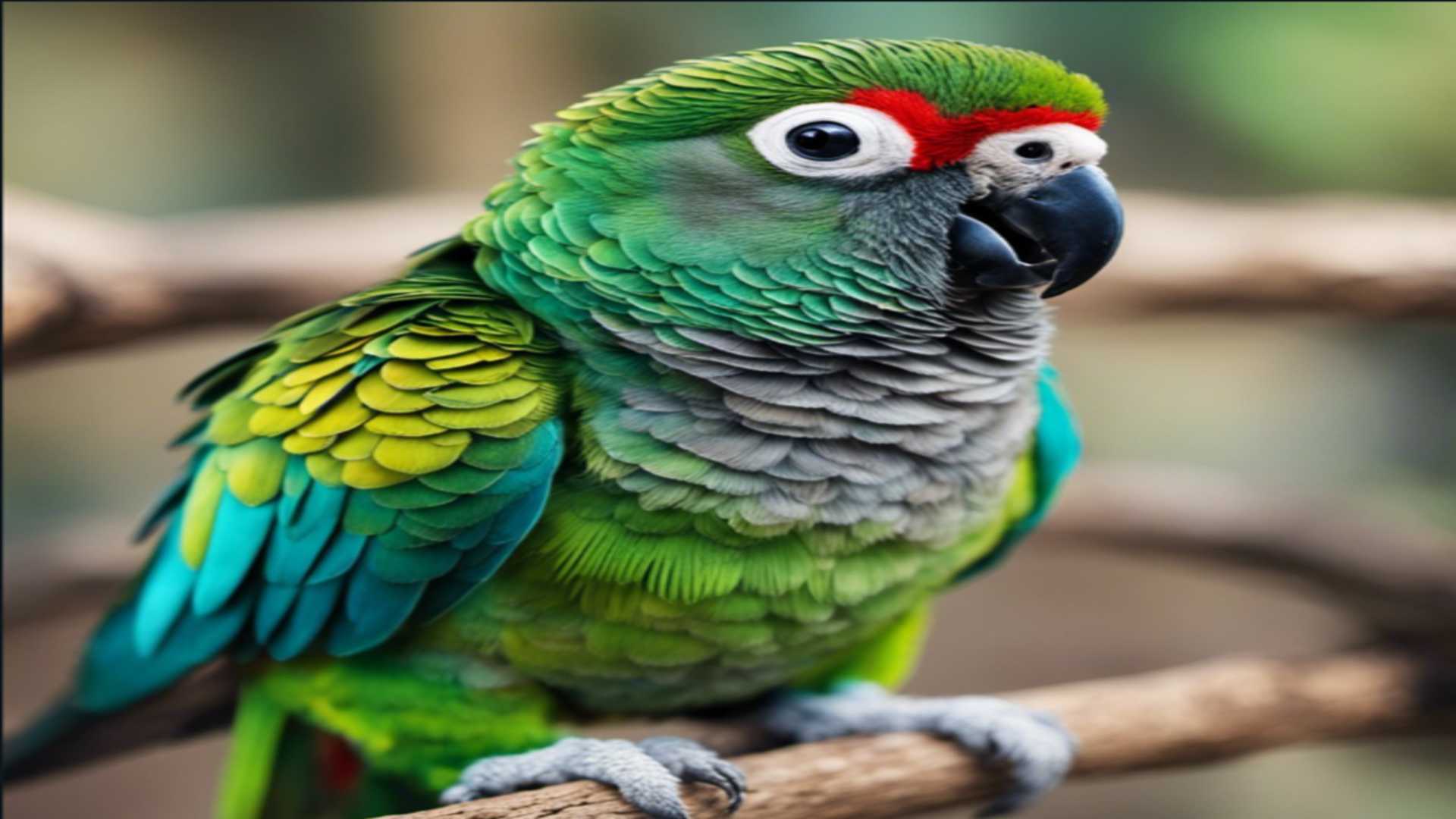Seagulls, also known as gulls, are a type of bird commonly found near coastlines and other bodies of water. They are known for their scavenging habits, and they eat a variety of foods. But how can seagulls swallow food whole?
Seagulls are able to swallow food whole due to their strong bills, sharp beaks, and powerful throats. They eat a variety of foods, including fish, crabs, worms, and insects, and are able to tear apart food and pick up small objects with their bills and beaks.
Seagulls are known for their ability to swallow large amounts of food in a single gulp. This is a useful adaptation for a bird that relies on scavenging, and since oftentimes they compete with each other for food, they need to be able to swallow it quickly.
This is especially important for seagulls that live near the coast, where food sources may be scarce and unpredictable. Seagulls are also able to regurgitate indigestible items, such as shells or bones, which helps them to extract as much nutrition as possible from their food.
If you’re interested in learning more about what foods seagulls can swallow whole, keep reading because we’ll explain five of the meals they’d love to eat and also provide resources on how to prevent them from eating yours!
Let’s get started!
Overview of seagulls and their eating habits
Seagulls, also known as gulls, are a group of medium to large-sized birds that belong to the family Laridae. There are many different species of gulls found all over the world, and they are often found near coastlines, lakes, and other bodies of water.
Gulls are known for their opportunistic eating habits and will eat a variety of food depending on what is available to them.
In the wild, gulls often feed on small fish, crustaceans, and mollusks, which they catch by diving into the water. They also scavenge for food and will eat carrion, or dead animals, if it is available.
In urban areas, gulls have been known to scavenge for food in garbage bins and dumpsters, and they have also been known to steal food from picnics and outdoor events. Gulls will also take advantage of human handouts and will beg for food from people.
Gulls have a diverse diet and will eat almost anything, including insects, eggs, small mammals, and even plants. In some areas, gulls have been known to feed on agricultural crops, leading to conflicts with farmers.
Overall, seagulls are adaptable birds that are able to survive in a variety of environments and will eat whatever food is available to them.
Can seagulls digest bones?
Yes, seagulls can digest bones. Their digestive systems are adapted to handle the consumption of bones, allowing them to break down and extract nutrients from the bones they consume. Seagulls are known to swallow small fish, crustaceans, and even whole clams, shells and all.
Why do seagulls eat everything?
Seagulls have a reputation for being opportunistic feeders, known for consuming a wide variety of foods. It is often a wonder to onlookers – why do seagulls eat everything?
These birds have adapted to scavenge for food in diverse environments, from beaches to urban areas, and their diet reflects this versatility.
The phrase “one man’s trash is another seagull’s treasure” rings true as seagulls are known to ingest items such as fish, insects, small rodents, and even garbage. This behavior is a survival mechanism that allows seagulls to thrive in various habitats and make the most of available food sources.
How do seagulls swallow food whole?
Seagulls are known for their voracious appetites and impressive ability to swallow food whole. But how do seagulls swallow food whole? Their secret lies in a combination of anatomy and behavior. Seagulls have specialized beaks and throat muscles that allow them to quickly and efficiently consume their prey without the need for chewing.
Additionally, seagulls have a unique way of tilting their heads back to help the food slide down their throats effortlessly. This enables them to ingest various foods, from small fish to crustaceans, in one swift motion. The next time you see a seagull gulp down its meal in one go, remember the fascinating way in which they can swallow food whole.
How do seagulls digest food?
Seagulls are known to have a diverse diet, often scavenging for food in coastal areas. They are opportunistic feeders and can swallow a surprising variety of items whole. But have you ever wondered how seagulls digest food? Seagulls have a highly acidic digestive system that allows them to break down and digest a wide range of foods, including fish, insects, and even small rodents.
Their stomach acid is so strong that it can dissolve bones and tough materials that other animals would find indigestible. This ability to digest a wide variety of foods whole is one of the reasons seagulls are such successful scavengers in coastal environments.
Types of foods seagulls can swallow whole
Seagulls are opportunistic feeders and will eat a wide variety of food depending on what is available to them. They are able to swallow a range of food items whole, including:
- Small fish
- Crabs
- Rabbits
- Pigeons
- Rats
That said, let’s take a closer look at each of them.
1. Small fish
Seagulls are opportunistic feeders, meaning they will eat just about anything they can find. One of their favorite things to eat is small fish!
Seagulls are often seen swooping through the waves trying to catch a tasty meal of silvery fish. Small fish that are about four inches long or less make for perfect seagull treats, and the gulls swallow them whole with ease.
2. Crustaceans
Crustaceans are a type of aquatic animal that includes crabs, lobsters, and shrimp. Seagulls love to eat these sea creatures because they are full of protein and other essential nutrients. The seagull can easily swallow them whole.
Depending upon what kind of crustacean the seagull eats, it may need to break open its shell first. Lobsters and crabs have tough exoskeletons which require extra force to crack open.
Seagulls have powerful beaks designed for this purpose, so the task becomes much easier for the bird. If it’s a shrimp or another type of small crustacean, the seagull will likely swallow them whole without extra effort.
3. Rats
Seagulls are surprisingly adept at catching and eating large prey. One such item they are often seen swallowing whole is rats. This is especially true in areas where human activities have led to an increase in rat populations, such as around landfills or along waterways.
Rats are actually quite easy for a seagull to swallow, as they are relatively small animals that lack many of the defenses used by larger prey. That being said, it’s not uncommon for seagulls to swallow mice or other rodents whole too.
Rats have surprisingly little fat content, so most seagulls don’t gain much from consuming them other than a filling belly! The primary benefit seems to be convenience – swallowing a rat whole requires less effort than tearing apart and pecking at smaller pieces of food.
These creatures can also be found scavenging near fish markets, looking for the occasional rat that gets swept up with the daily catch. Seagulls are quick opportunists and will take advantage of any easy meal they can find!
4. Rabbits
Seagulls love to eat rabbits! The size of their prey depends on how large seagulls are – bigger birds can swallow larger prey – but even smaller-sized birds can readily feast on rabbits. Like most other animals, rabbit meat is a good source of essential nutrients for seagulls.
Rabbits are quick and agile, so they’re not easy targets. Seagulls use their strong beaks and powerful wings to hunt them down and snatch them up before swooping away with their meal.
Because of the abundance of rabbits in many areas, they offer a plentiful food source that can easily provide the necessary sustenance for hungry seagulls.
5. Pigeons
It is possible for a seagull to swallow a pigeon whole, but it is not common for seagulls to prey on pigeons. Seagulls are generally opportunistic feeders and will eat a variety of foods, including fish, shellfish, insects, and small rodents.
However, they are more likely to scavenge for food or catch small fish and invertebrates than to hunt larger prey such as pigeons.
It is also worth noting that seagulls have relatively small beaks compared to their body size, so they may have difficulty swallowing larger prey such as pigeons whole.
How do seagulls feed?
Seagulls feed by using their beaks to catch and eat food. Seagulls typically catch their food by dipping their beaks into the water and scooping up small fish or other animals.
They may also use their beaks to pluck insects or other small animals from the ground or the surface of the water. Seagulls have a muscular tongue and a gizzard (a part of the digestive system) that helps them crush and grind their food before it is digested.
The impact of human activity on seagull eating habits
Human activity can have a significant impact on seagull eating habits. Seagulls are opportunistic feeders, which means that they will eat whatever food is available to them.
This can include natural sources of food, such as fish and invertebrates, as well as human-provided food, such as garbage and discarded food.
Seagulls are often attracted to areas where there is a lot of human activity, such as coastal towns and cities because these areas tend to produce a lot of waste that the gulls can feed on.
In these areas, seagulls may become accustomed to feeding on human food and may begin to rely on it as a primary source of sustenance.
This can lead to a shift in the seagulls’ natural feeding habits and behaviors, as they may spend less time foraging for natural food sources and more time scavenging for human food.
Summary
Before we move on to the conclusion, we’ve summarized this article into a short list of key points for you to remember:
- Seagulls are opportunistic feeders and can swallow various whole foods, including fish, shellfish, insects, and small rodents.
- Seagulls have gizzards that help pre-digest food before it reaches the stomach.
- Human activity can have a significant impact on seagull eating habits.
Conclusion
It is important to remember that seagulls are not just birds; they are highly skilled predators! While they may seem harmless and fun to watch, they are capable of swallowing some pretty sizeable foods.
Want to learn more about seagulls?
Ready to boost your knowledge to the next level? If so, check out the articles below:
- Can Seagulls and Pigeons Breed? (Explained For Beginners)
- Do Seagulls Attack Humans? Are They Aggressive? (Explained)
- How Do Seagulls Know When You Have Food? (Explained)





